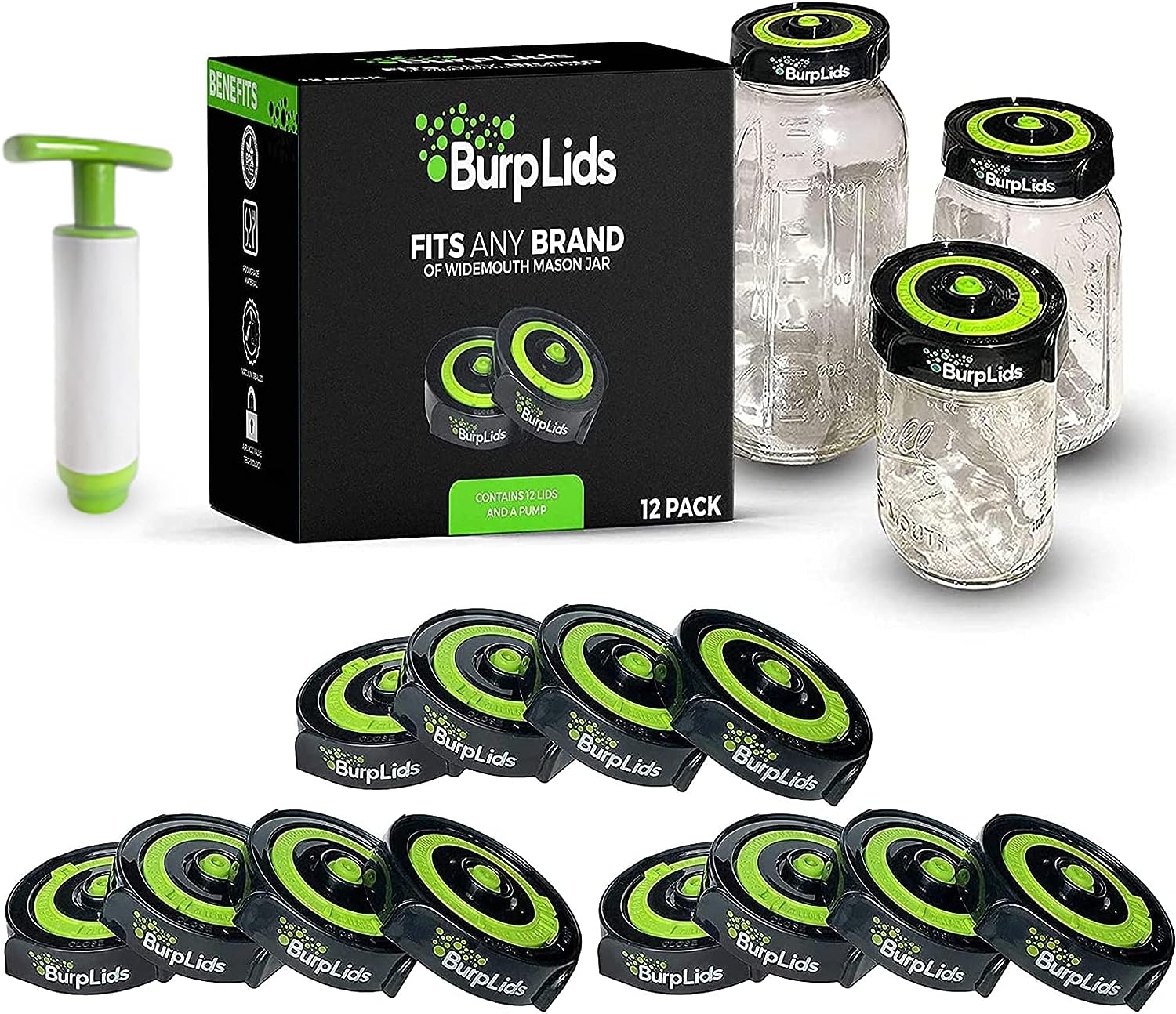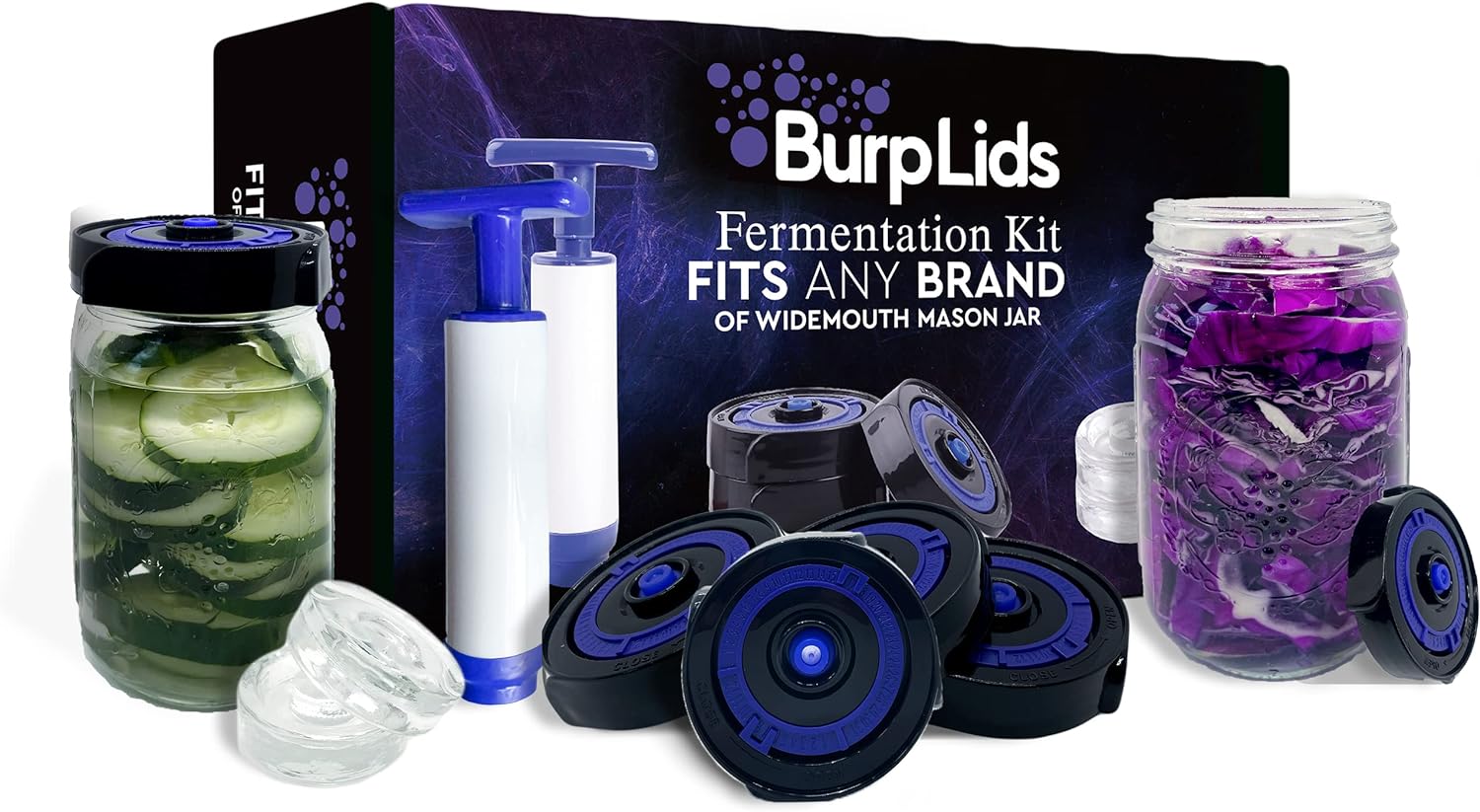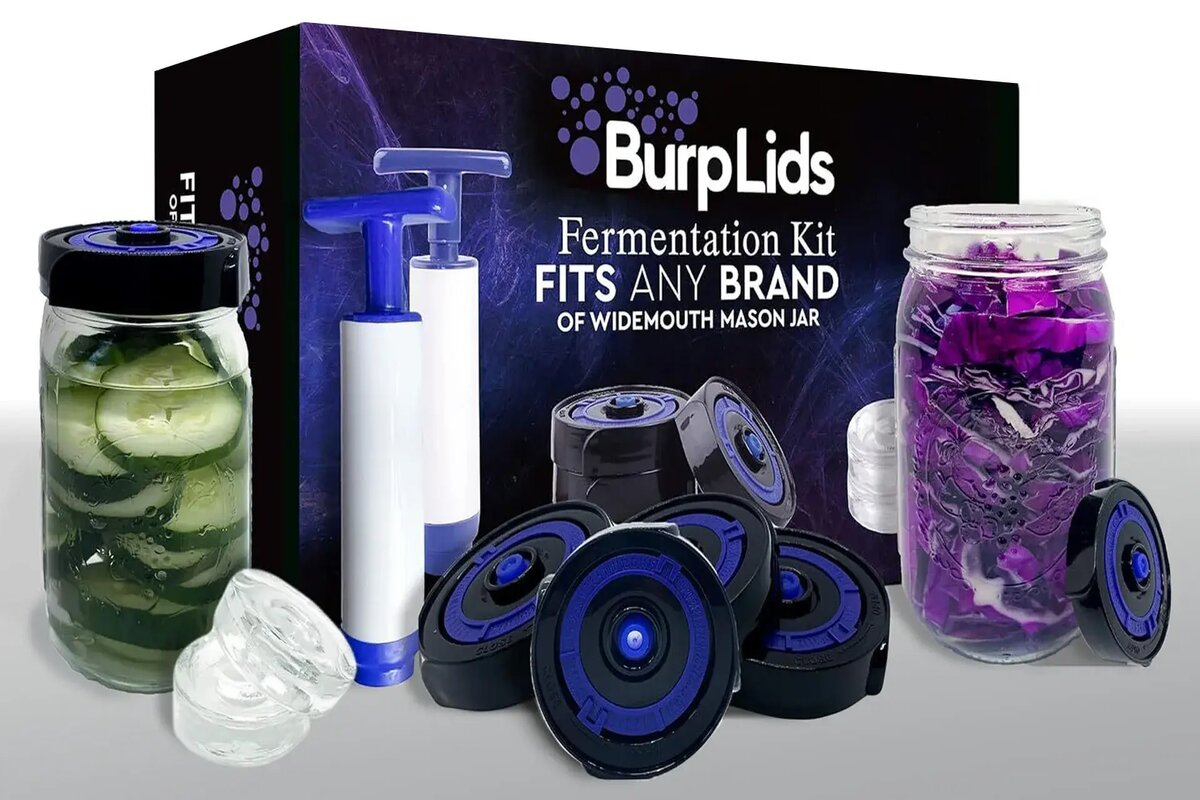Ideal Fermentation Temperature: A Guide to Achieving Optimal Results
Fermentation temperature is a critical factor in achieving optimal results when making fermented beverages. It directly impacts the flavor, aroma, and overall quality of the final product.
By controlling the temperature, we can ensure a successful fermentation process and avoid any off-flavors. Temperature also plays a significant role in yeast metabolism and the production of flavor compounds.
Higher temperatures can speed up fermentation but may result in undesirable flavors, while lower temperatures can slow it down but lead to a cleaner taste. Finding the right balance is essential for achieving the desired flavors and aromas.
Maintaining a consistent and optimal fermentation temperature is beneficial in promoting yeast health and activity. It reduces the risk of contamination and off-flavors, resulting in a better final product. Proper temperature control is crucial for fermentation success.
In this blog post, we will delve deeper into the importance of fermentation temperature and how it affects the fermentation process. We will explore the benefits of maintaining the ideal temperature and provide insights into achieving the best possible results. So, let's dive in and discover the secrets to perfect fermentation temperature!
Understanding Different Fermentation Temperatures

When it comes to brewing beer, fermentation temperature plays a crucial role in determining the final flavor and characteristics of the brew. Each beer style has its own ideal temperature range for fermentation, which helps to bring out the desired flavors and aromas. Let's take a closer look at the different temperature ranges for various beer styles and how they impact the final product.
Ales
Ales are typically fermented at temperatures ranging from 65°F to 75°F (18°C to 24°C) . This temperature range allows for the production of fruity esters and complex flavors. The higher temperatures encourage the yeast to produce these flavorful compounds, resulting in a wide variety of taste profiles. Ales are known for their rich and diverse flavors, making them a favorite among craft beer enthusiasts.
Lagers
Lagers require cooler fermentation temperatures, typically around 45°F to 55°F (7°C to 13°C) . This slow and cold fermentation process results in a clean and crisp taste. The lower temperatures inhibit the production of fruity esters, resulting in a more subdued flavor profile. Lagers are characterized by their smoothness and refreshing qualities, making them a popular choice for those who prefer a lighter beer.
IPAs
IPAs, known for their hop-forward flavor profiles, are often fermented at temperatures between 65°F to 70°F (18°C to 21°C) . This range balances the production of hop flavors and fruity esters. The slightly higher temperatures enhance the hop aromas and bitterness, creating a well-balanced and aromatic beer.
Stouts
Stouts, beloved for their rich and roasty flavors, benefit from fermentation temperatures around 60°F to 68°F (15°C to 20°C) . This temperature range enhances the development of the complex flavors associated with stouts. The slightly warmer temperatures encourage the yeast to produce compounds that contribute to the beer's characteristic roasted malt flavors.
Pilsners
Pilsners, with their clean and crisp lager-like profile, require a colder fermentation temperature of 45°F to 50°F (7°C to 10°C) . As we explore the intricacies of fermentation temperatures, it's intriguing to reflect on the broader biological roles of fermentation. A common query is whether is fermentation a part of cellular respiration; indeed, it is an anaerobic process that generates energy when oxygen is scarce, highlighting its integral role in both brewing and the fundamental energy cycles in cells. The harmony between biology and brewing is a reminder of the profound connections that underpin our food and beverage cultures. This temperature range allows for a clean fermentation process, resulting in a light and refreshing beer. Pilsners are known for their delicate flavors and smooth finish.
Bocks
Bocks are typically fermented at temperatures ranging from 50°F to 55°F (10°C to 13°C) . This range helps to develop malty and slightly sweet flavors. Bocks are often enjoyed during the cooler months and are known for their rich and full-bodied characteristics.
Yeast Fermentation Temperatures
The temperature at which yeast ferments also plays a significant role in the final flavor of the beer. Lager yeasts, for example, are known for their ability to ferment at lower temperatures. They thrive in the temperature range of 45°F to 55°F (7°C to 13°C) and produce clean and crisp flavors characteristic of lagers. Ale yeasts, on the other hand, are more tolerant of higher fermentation temperatures. They work best in the range of 65°F to 75°F (18°C to 24°C) and produce fruity and complex flavors typical of ales.
Understanding the optimal fermentation temperature for each beer style and yeast strain is essential for achieving the desired flavor profile. By controlling the fermentation temperature, brewers can harness the full potential of the ingredients and yeast, resulting in a beer that is balanced, flavorful, and enjoyable.
Methods for Controlling Fermentation Temperature
Controlling fermentation temperature is crucial for achieving the desired flavor and quality of beer. In this section, we will explore different methods for controlling fermentation temperature and discuss their pros and cons.
DIY Solutions
One popular DIY solution is to create a dedicated space, such as a fermentation chamber or a temperature-controlled room. This allows brewers to have precise control over the temperature throughout the fermentation process. Insulating the space with materials like foam or jackets helps maintain a stable temperature. Wrapping the fermentation vessel with a heating pad or a cooling wrap provides additional temperature control.
Fermentation Chamber
A fermentation chamber equipped with a thermostat and temperature controller provides a controlled environment for fermentation. Brewers can adjust the temperature according to the specific requirements of the beer style they are brewing. Whether it's a lager that needs lower temperatures or an ale that requires slightly higher temperatures, a fermentation chamber can provide the ideal conditions.
Dedicated Refrigeration Units
Dedicated refrigeration units designed for controlling fermentation temperatures are available in the market. These units come in different sizes and designs to accommodate different fermentation setups. They offer precise temperature control and eliminate the need for DIY solutions. They can also be more energy-efficient, ensuring consistent temperature throughout the fermentation process. However, dedicated units can be expensive and may require additional space.
Heating Solutions
Maintaining a consistent temperature during fermentation is crucial for yeast activity and flavor development. Heating solutions such as heating pads, heat belts, or heat wraps can be used to warm the fermentation vessel if the temperature drops too low. These solutions help maintain a stable temperature and ensure a smooth fermentation process.
Controlling fermentation temperature is essential for brewing high-quality beer. DIY solutions like creating a dedicated space or using insulation techniques can be effective. However, dedicated refrigeration units offer precise control and convenience. Heating solutions help maintain a consistent temperature. By carefully considering these methods and selecting the one that best suits their brewing setup, brewers can achieve optimal fermentation temperature and desired flavor in their beer.
Monitoring and Adjusting Fermentation Temperature

Monitoring and adjusting fermentation temperature is crucial for the success of the fermentation process and the quality of the final product. Regular monitoring of temperature throughout the fermentation process ensures that the fermentation is progressing as desired. By keeping a close eye on the temperature, you can identify any fluctuations or issues that may affect the fermentation.
One of the most common tools used for monitoring fermentation temperature is a digital thermometer with a temperature probe. This allows for accurate measurement of the temperature inside the fermentation vessel. With a digital thermometer, you can easily check the temperature at any time and make necessary adjustments if needed. Another option is wireless temperature sensors, which provide real-time temperature readings without the need for manual checks. This can be especially useful if you have multiple fermentation vessels or if you want to monitor the temperature from a distance.
Making adjustments to the fermentation temperature during active fermentation is important to ensure that the fermentation stays within the desired range. If the temperature deviates from the ideal range, there are several methods you can use to make adjustments. If the temperature is too high, you can use cooling methods such as ice packs or a cooling wrap to lower the temperature. On the other hand, if the temperature is too low, heating methods like heating pads or a heat belt can be used to raise the temperature.
It's important to note that temperature fluctuations can have a significant impact on the fermentation process and the final product. Yeast activity is highly dependent on temperature, and different yeast strains have different temperature ranges at which they perform best. By monitoring and adjusting the fermentation temperature, you can ensure that the yeast is working optimally and producing the desired flavors and aromas in the final product.
Ambient Temperature and Fermentation
Ambient temperature refers to the temperature of the surrounding environment where fermentation takes place. It plays a significant role in the fermentation process, as it can have a direct impact on the fermentation temperature, especially in non-insulated fermentation setups.
- In non-insulated setups, the ambient temperature can cause fluctuations in the fermentation temperature.
- If the ambient temperature is higher than desired, it can lead to an increase in the fermentation temperature.
- If the ambient temperature is lower, it can result in a decrease in the fermentation temperature.
- These temperature fluctuations can have adverse effects on the fermentation process, affecting the flavor, aroma, and overall quality of the final product.
Tips for Managing Temperature Fluctuations
To manage temperature fluctuations and ensure stable fermentation conditions, here are a few tips:
- Insulate the fermentation vessel: Insulation helps minimize the impact of ambient temperature fluctuations by providing a barrier between the external environment and the fermentation process. This can be done using materials such as foam insulation or by placing the fermentation vessel in a temperature-controlled space, such as a fermentation chamber.
- Use a fermentation chamber: A fermentation chamber is a dedicated space designed to provide precise temperature control for the fermentation process. It typically consists of an enclosed area with temperature-regulating equipment, such as a thermostat or temperature controller. By placing the fermentation vessel inside the chamber, growers can have better control over the fermentation temperature, regardless of the ambient temperature.
- Monitor the ambient temperature: Regularly checking the ambient temperature and adjusting the fermentation setup accordingly is crucial for maintaining stable fermentation conditions. This can be done using a thermometer or a temperature monitoring device specifically designed for fermentation.
The Importance of Choosing the Right Yeast Strain for Brewing Beer
When it comes to brewing beer, the choice of yeast strain is crucial. There are two main types of yeast strains used in brewing: lager yeasts and ale yeasts. Each type has its own temperature requirements and characteristics that can greatly impact the final flavor profile and fermentation conditions.
Lager Yeasts
Lager yeasts are known for their ability to ferment at lower temperatures, typically around 45°F to 55°F (7°C to 13°C). These strains produce clean and crisp flavors, making them ideal for lager beer styles. When choosing a lager yeast strain, it's important to consider the desired beer style and the available fermentation setup. Some strains may require specific temperature control equipment, such as a refrigeration unit, to maintain the optimal fermentation temperature.
Ale Yeasts
Ale yeasts, on the other hand, are more tolerant of higher fermentation temperatures, ranging from 65°F to 75°F (18°C to 24°C). They are known for producing a wide range of flavors and aromas, making them suitable for various beer styles, including ales, IPAs, stouts, and more. When selecting an ale yeast strain, it's important to choose one that complements the desired flavor profile and fermentation conditions. Some ale yeast strains may work better at specific temperatures, so it's important to consult yeast suppliers and brewing resources for information on the optimal temperature range for different strains.
Factors to Consider
There are several factors to consider when selecting a yeast strain for optimal fermentation temperature:
- Beer Style: Different beer styles require different yeast characteristics and temperature ranges to achieve the desired flavors.
- Fermentation Setup: The available fermentation setup and equipment should be taken into account. Some yeast strains may require specific temperature control methods, such as a fermentation chamber or a temperature-controlled fermentation vessel.
- Desired Flavors: The desired flavors and aromas of the final beer should also be considered when choosing a yeast strain. Certain yeast strains produce specific esters and phenols that contribute to the overall flavor profile of the beer.
- Yeast Characteristics: The characteristics of the yeast strain itself should also be taken into account. Some strains may be more flocculent, meaning they settle to the bottom of the fermenter more easily, while others may be more attenuative, meaning they consume more fermentable sugars.
- While the focus here is primarily on brewing, the concept of fermentation extends far into the culinary world, especially when considering is fermented food good for gut health. Foods like kimchi, sauerkraut, and kefir are not just culinary trends; they play significant roles in promoting a healthy gut microbiome due to their probiotic content. Just as the right yeast strain is essential for a perfect brew, the right bacteria can make all the difference in fermented foods that support digestion and overall wellness.
The Importance of Fermentation Temperature
When it comes to fermentation, temperature plays a crucial role in determining the quality and flavor of the final product. Incorrect fermentation temperatures can lead to a range of potential issues that can affect the taste and overall success of your brew.
Effects of High Fermentation Temperatures
High fermentation temperatures can result in excessive ester production, off-flavors, and the presence of fusel alcohols. These off-flavors can give your beer a harsh and unpleasant taste, detracting from the desired flavor profile. It's important to note that different yeast strains have different temperature requirements, so it's essential to choose the right yeast for your desired outcome.
Effects of Low Fermentation Temperatures
On the other hand, low fermentation temperatures can also cause problems. If the temperature is too low, the fermentation process can become sluggish, resulting in under-attenuation and a lack of flavor development. This can lead to a beer that lacks complexity and depth in its taste.
Troubleshooting High Fermentation Temperatures
If you find yourself facing off-flavors due to high fermentation temperatures, there are a few troubleshooting tips you can try:
- Allow the beer to age, as this can sometimes help mellow the flavors and reduce the intensity of off-flavors caused by high temperatures.
- Adjust the fermentation temperature within the appropriate range to resolve temperature-related issues.
Importance of Monitoring and Control
It's important to monitor and control the temperature throughout the fermentation process to ensure optimal conditions for yeast activity. By understanding the potential issues caused by incorrect fermentation temperatures and following troubleshooting tips, you can avoid common mistakes and ensure a successful brewing process.
Conclusion
Maintaining the correct fermentation temperature is crucial for achieving the desired flavor and quality in your beer. High temperatures can lead to off-flavors and excessive ester production, while low temperatures can result in sluggish fermentation and under-attenuation. Remember to choose the right yeast strain and monitor the temperature closely to achieve optimal results. Cheers to delicious homebrewed beer!
Maintaining the Ideal Fermentation Temperature
Ensuring the ideal fermentation temperature is crucial for achieving the desired flavors and aromas in fermented beverages. It is important for the proper activity of yeast and other microorganisms involved in the fermentation process. In this guide, we have discussed various methods and techniques to control fermentation temperature. From DIY solutions to dedicated refrigeration units and heating solutions, there are options for every brewer's needs.
To achieve optimal results, it is essential to monitor the temperature throughout the fermentation process and make necessary adjustments. If you're looking for a convenient and efficient solution, consider BurpLids®. BurpLids® offers a range of fermentation products designed to maintain a controlled environment and prevent oxygen and contaminants from entering the jars.
With BurpLids®, you can say goodbye to the hassle of daily burping and achieve faster and more efficient curing. Our products include air-lock lids with vacuum-seal valve technology, fermentation weights, and extraction pumps. To learn more about BurpLids® fermentation products and how they can enhance your fermentation process, visit our website at https://www.burplids.com.
Whether you're a novice or an experienced fermenter, BurpLids® has the tools you need to achieve a successful cure and save time and effort in the process. Don't miss the chance to explore their catalog of products, including our fermentation kit, which provides all the essentials for a successful fermentation. Take your fermentation game to the next level with BurpLids® and enjoy the flavors and aromas of perfectly fermented beverages.
Remember, maintaining the ideal fermentation temperature is the key to unlocking the full potential of your brews. With BurpLids® by your side, you can achieve optimal results and take your fermentation journey to new heights. Cheers to delicious and perfectly fermented beverages!
 Plastic BurpLids® Curing Kit
Plastic BurpLids® Curing Kit
 BurpLids® 12 Pack Curing Kit
BurpLids® 12 Pack Curing Kit
 BurpLids® 14 Pack Curing Kit
BurpLids® 14 Pack Curing Kit
 BurpLids® Pack Of 4 Fermentation Kit
BurpLids® Pack Of 4 Fermentation Kit





